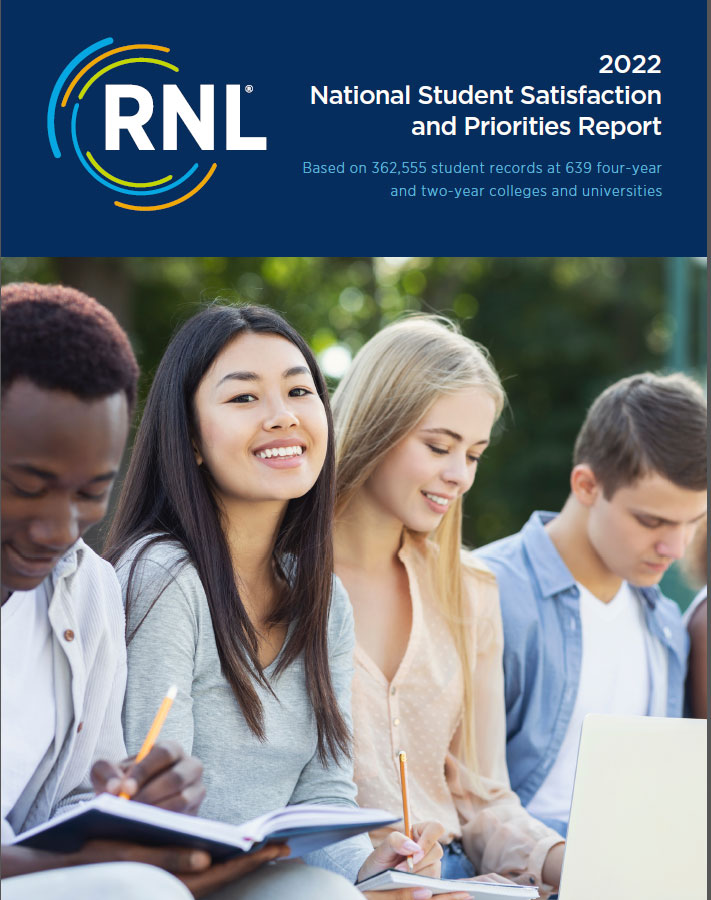enrollment
How Satisfied Are Graduate Students and Online Learners?
Student success efforts often focus on traditional, undergraduate students. But there is value in being intentional with supporting the experiences of your graduate students and online learners as well. Gathering student satisfaction data is one way to understand the current student experience and to identify priorities for improvement. While these student populations tend to be pretty satisfied (compared with traditional, undergrad, on-campus students), there is always room for improvement based on the areas that matter most to the students. Plus, the process for gathering the feedback, sharing what you learn with the students and highlighting for them how you have responded, creates a more positive climate where your graduate students and online learners know that you care about them and their experience at your institution.
Overall satisfaction
The 2022 National Student Satisfaction and Priorities Report reflects the satisfaction and importance levels across student populations and institutional types. The data were collected between the fall of 2019 through the spring of 2022 from more than 362,000 students at 639 institutions.
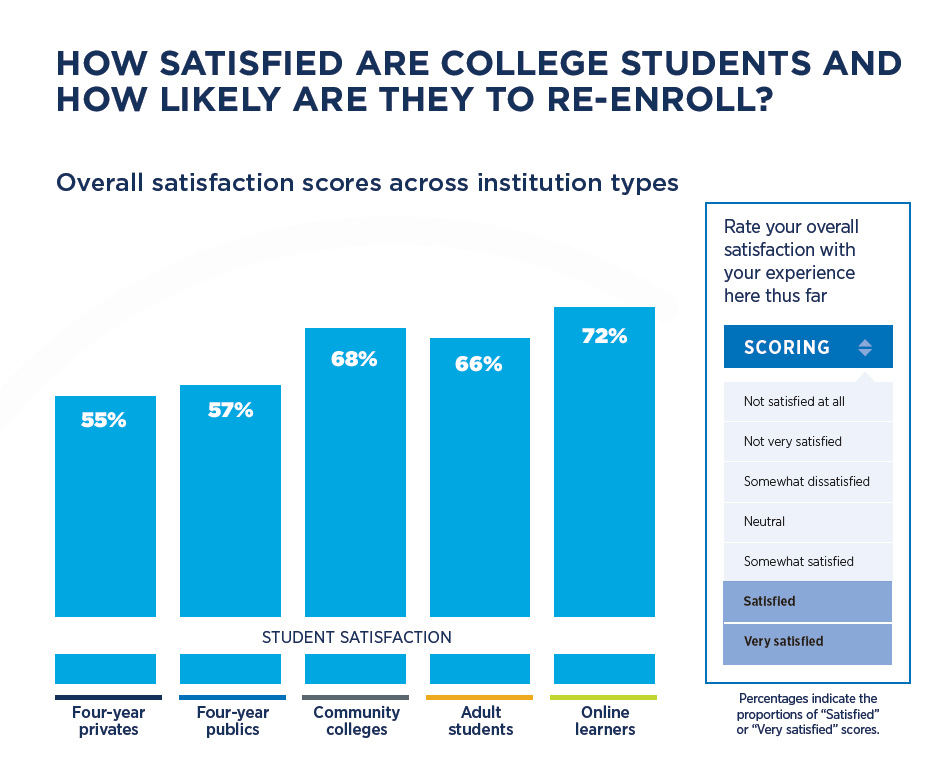
As reflected in the chart above, graduate students and online learners indicate much higher overall satisfaction levels than undergraduate traditional students at four-year private and public institutions. Students at community colleges (which often trend toward older and non-traditional populations) also reflect high satisfaction levels.
While satisfaction levels are relatively high for graduate and online students, there are always areas to be sure to celebrate as high performers as well as places where institutions could be doing even better in serving these students. Let’s unpack the data further.
Graduate students: Strengths and challenges
Strengths are identified as items in the top of half of importance rankings and the upper quartile of satisfaction scores. For the national data set of 21,487 graduate students from 96 institutions, the following items are identified as the top five strengths:
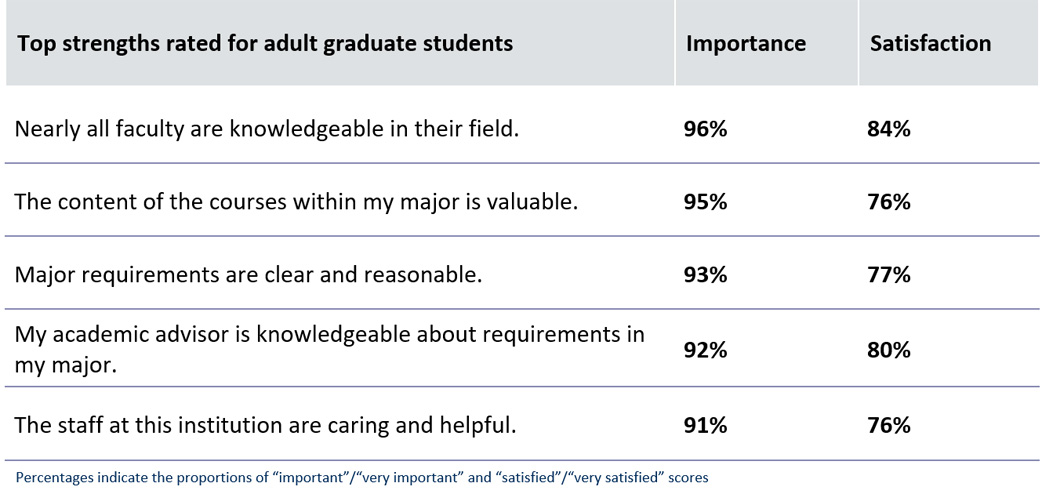
Challenges are identified as items in the top half of importance rankings and the upper quartile of the performance gap score (which equals importance minus satisfaction). For the national data set of graduate students, the following items are identified as the top challenges (there were only four overall):
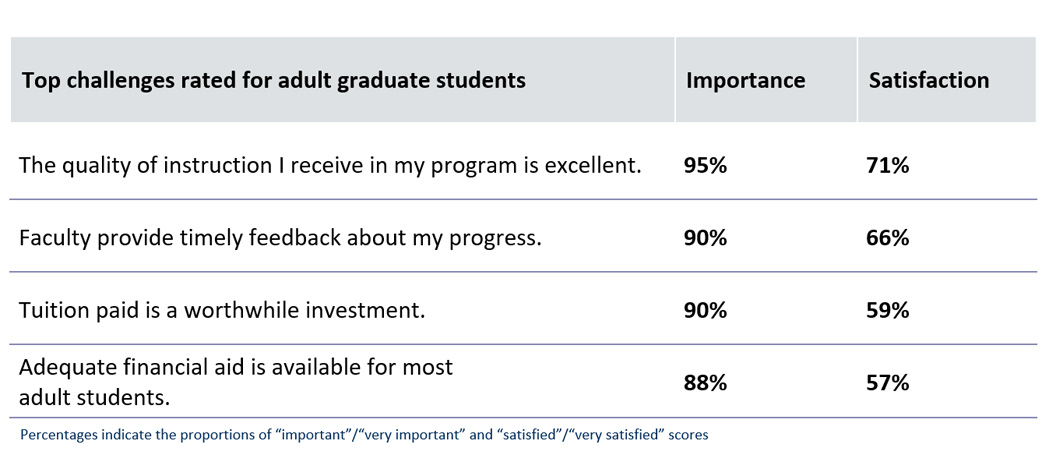
Both the strengths and the challenges for graduate students are dominated by the academic experience, since that is where they are focused in their interactions with the institution.
The “tuition paid is a worthwhile investment” item is one we see over and over again for all levels of students at four-year private and public institutions. It is a topic we have helped campus leadership with by considering how best to respond with better communication.
Online learners: Strengths and challenges
Strengths are again identified as items in the top of half of importance rankings and the upper quartile of satisfaction scores. For the national data set of 95,512 online learners from 146 institutions, the following items are identified as the top five strengths:
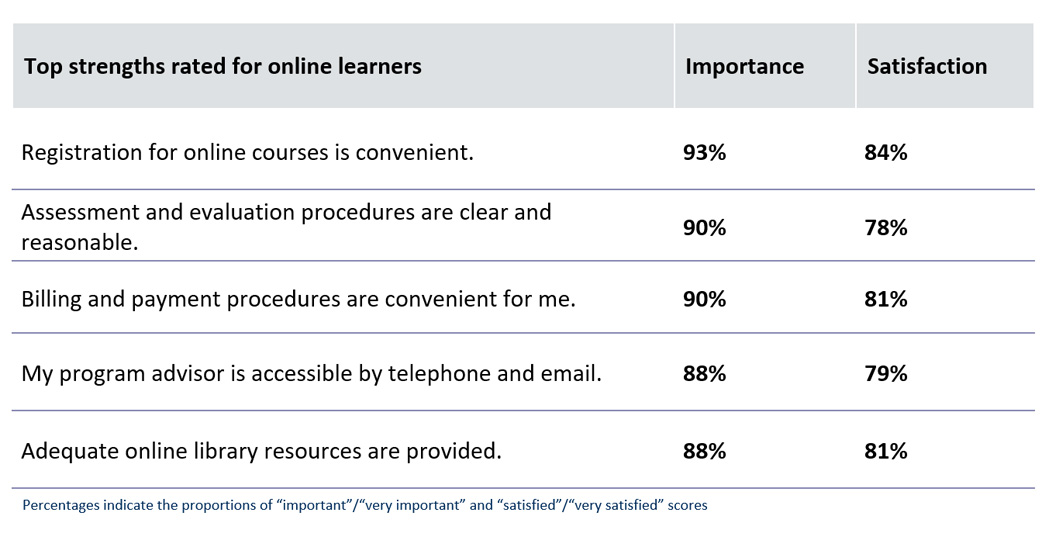
Challenges are again identified as items in the top half of importance rankings and the upper quartile of the performance gap score (which equals importance minus satisfaction). For the national data set of online learners, the following items are identified as the top five challenges:
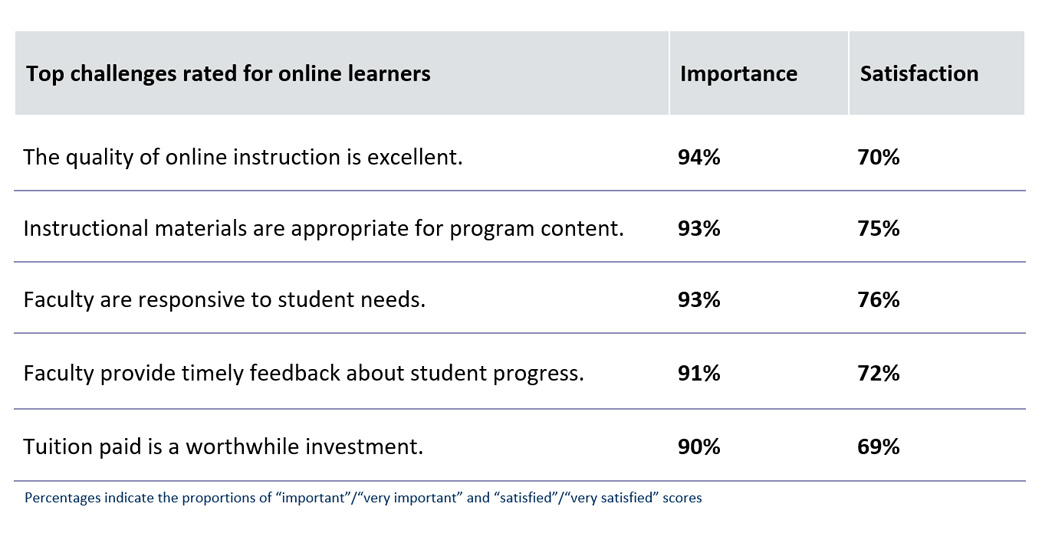
For online learners, the strengths cluster around the procedural aspects of the student experience while the challenges are focused on the instructional areas. Similar to the results for graduate students, online learners perceive tuition worthwhile as a challenge.
Take action to improve student satisfaction
Gathering data from students is important for graduate and online learning programs, but what really makes a differences between successful institutions and those that are not, is whether the data are used to guide decision making. Action steps include:
- Share and review the institutional strengths and challenges with your leadership.
- Unpack the data by demographic variables; this is especially valuable at the program level to see if students in the business program are responding differently than students in the health sciences. This can clarify where concerns exist, especially on instruction-related challenge items.
- Identify ways to respond to the areas of concern by making an immediate change, by planning for future changes and/or by communicating better or differently with students about what is available to them.
- Close the feedback loop with students about the actions that were taken to ensure that they know that you care about them and are listening to what they are saying on the survey.
- Have a plan to survey again within two years to document how satisfaction levels have improved as a result of the actions you have taken.
Reviewing the national data is of course valuable to see overall trends in higher education. But the most valuable data are the satisfaction and importance scores collected from your own students to see how your institution is performing and where your opportunities for improvement exist. Let me know if you would like to learn more about the Adult Student Priorities Survey (ASPS) for graduate students or the Priorities Survey for Online Learners (PSOL) for your online population. These instruments are in the same family as the Student Satisfaction Inventory for your traditional, undergraduate, on-ground student population.
Optimize the online learning experience
The RNL Priorities Survey for Online Learners provides actionable data to improve the online student experience and increase student retention. Find out how it can benefit your campus.
